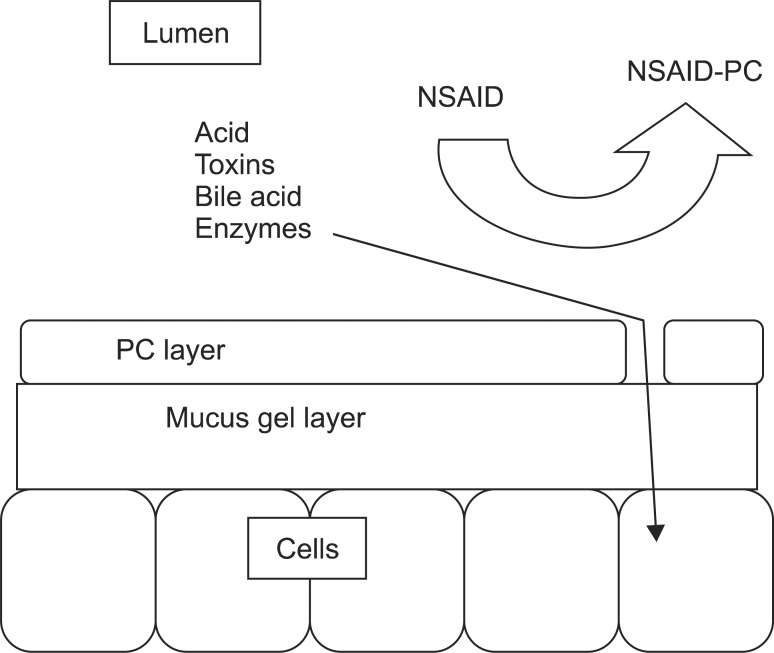Fig. 1.
Schematic model depicting the role of the extracellular lining of the phosphatidylcholine (PC) in generating a hydrophobic barrier in the gastrointestinal tract against aggressive luminal agents, as well as the mechanism by which nonsteroidal anti-inflammatory drugs (NSAIDs) may compromise the surface barrier by disrupting the PC layer allowing luminal agents access to the epithelium.

